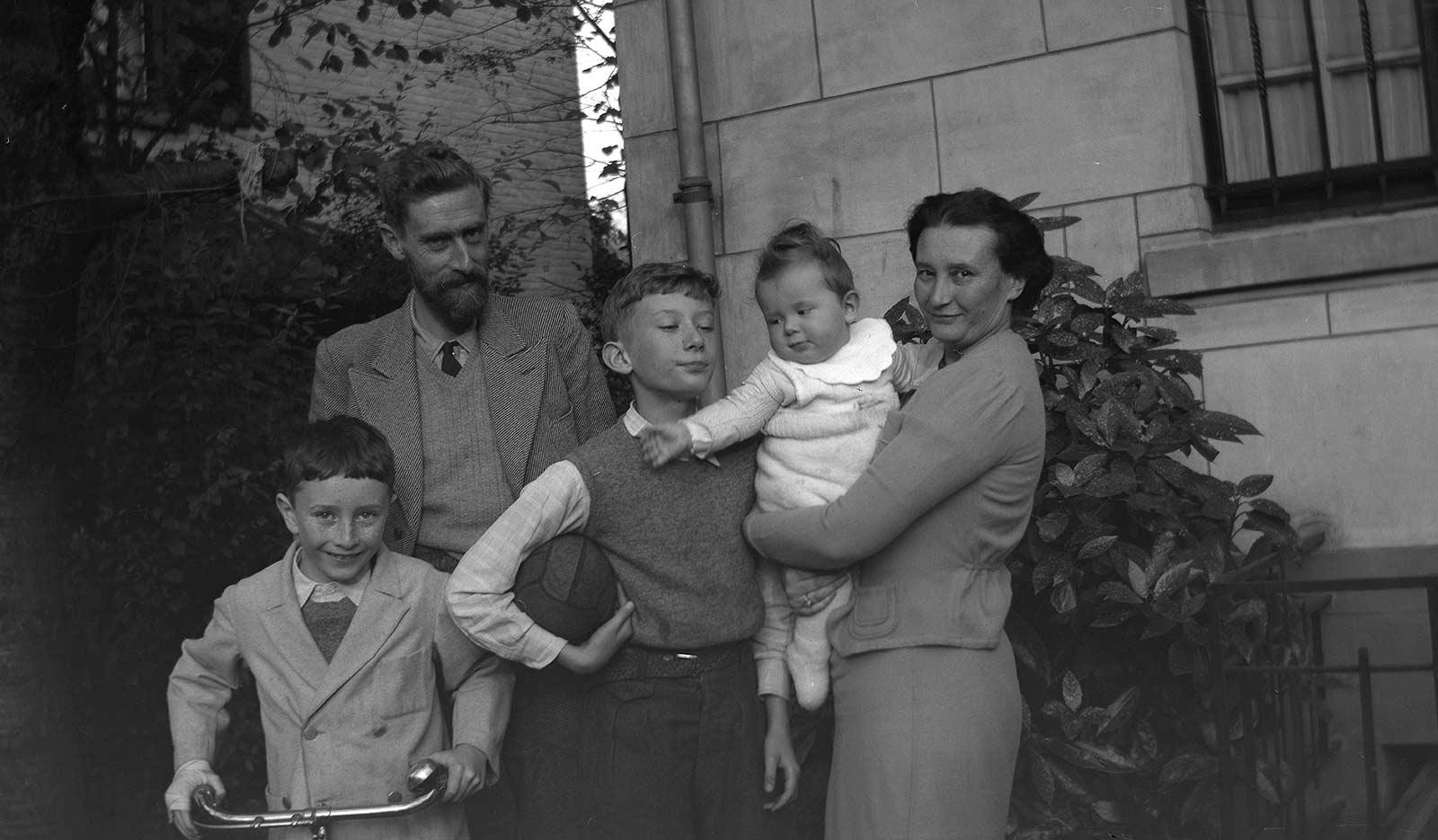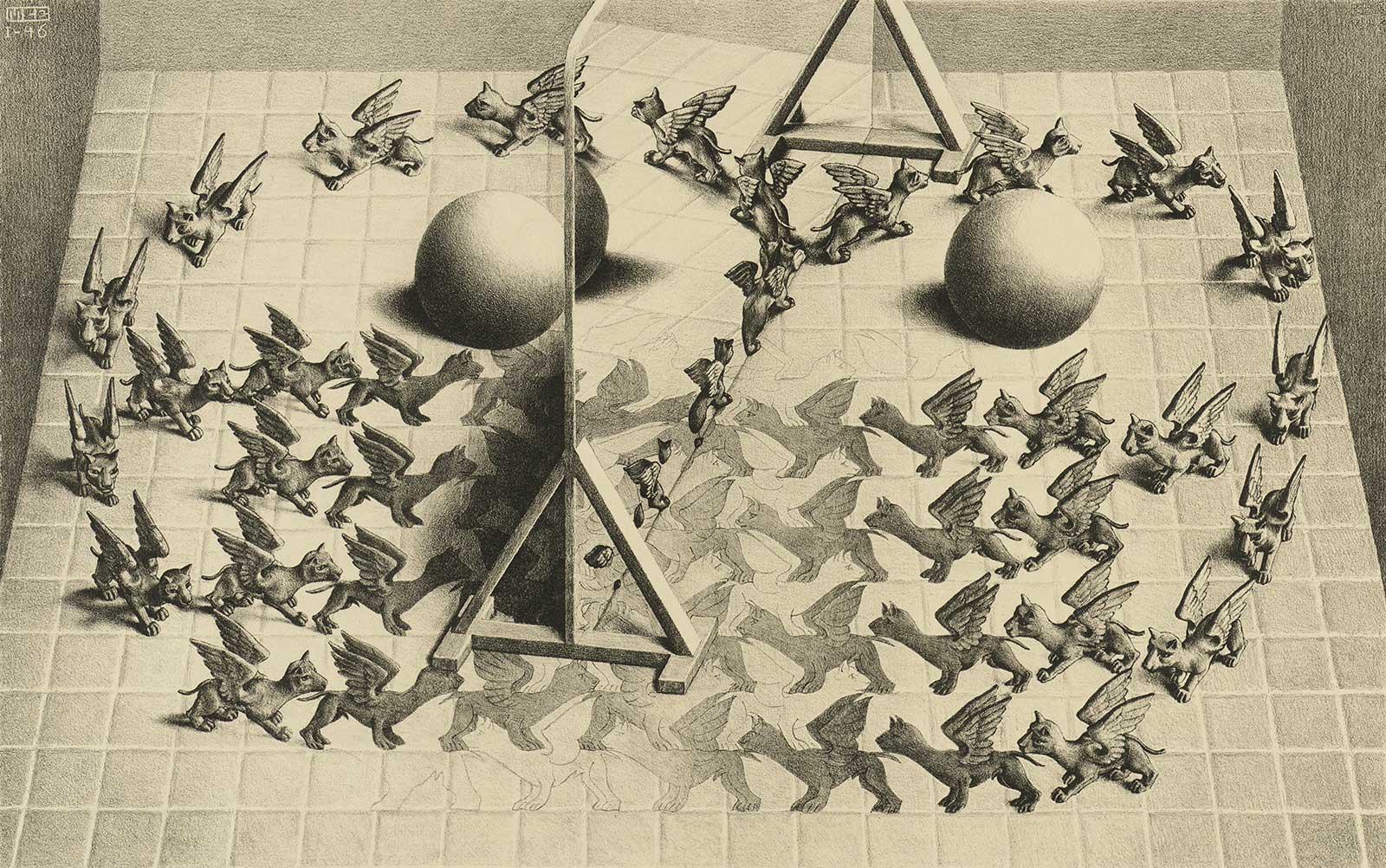

Of all the themes and subjects Escher had tackled during his career, the one he was most drawn to was the regular division of the plane. He engaged in countless experiments to examine the many ways in which a plane could be filled with patterns of geometric shapes. He did so in drawings in notebooks. In the process (and this embodies Escher’s great strength) he managed to bend these geometric shapes into recognisable figures. Crudely at first, but as he got more adept at this, the fish, birds, lizards, beetles, butterflies, horses and other animals and shapes kept getting more refined. The drawings were a form of research, but he also drew from them ideas for new work or for commercial assignments.
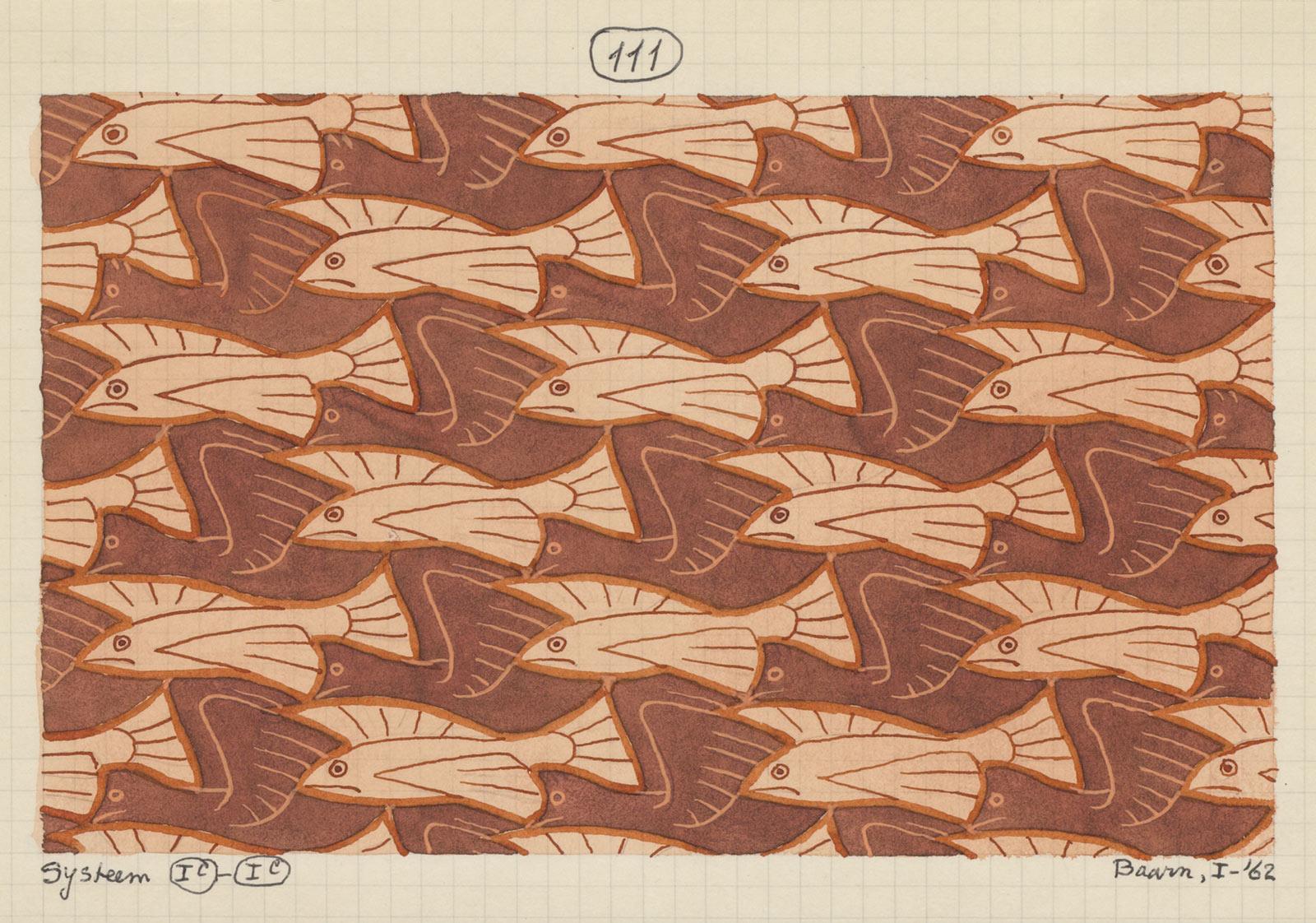
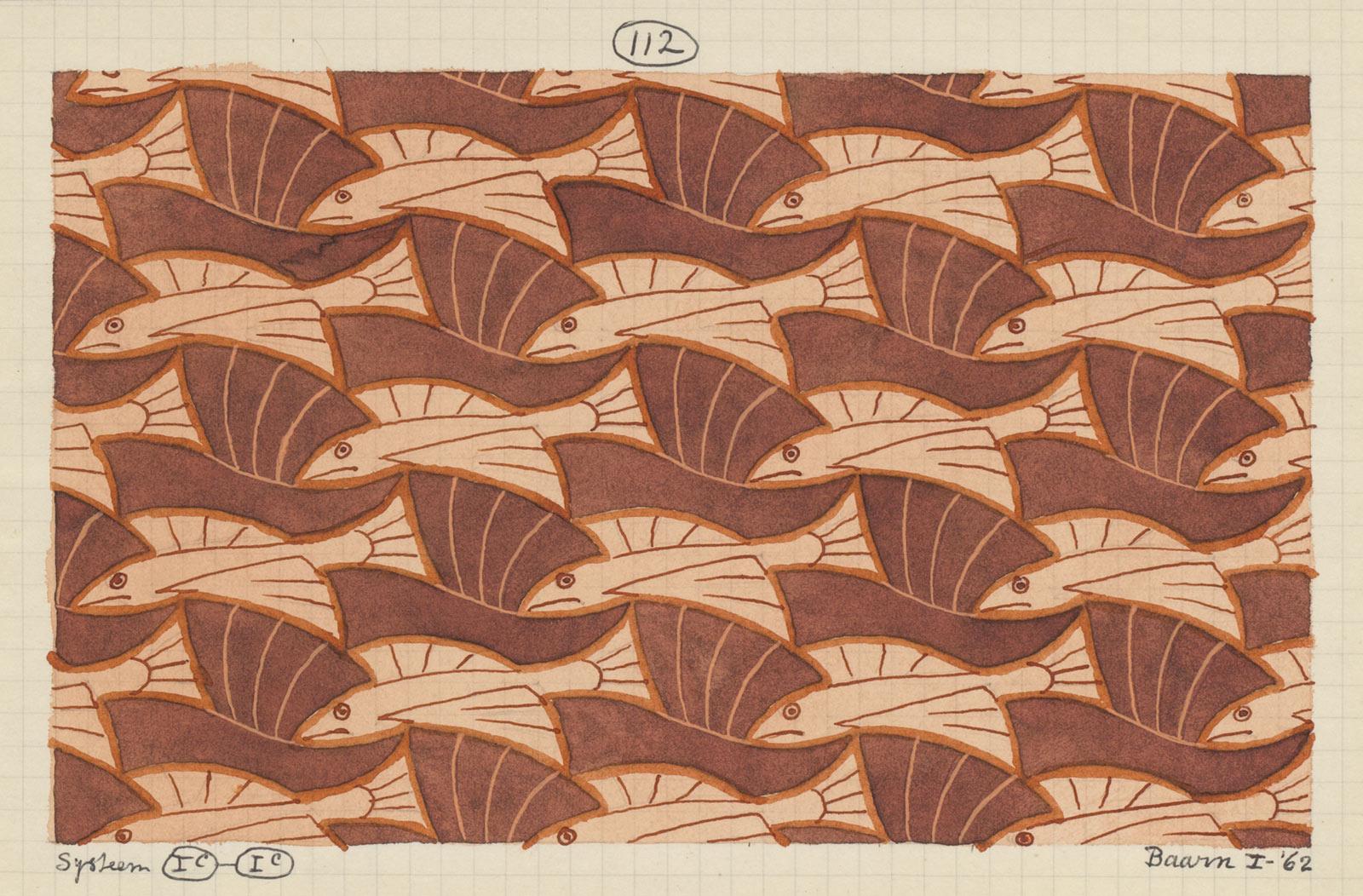
In January 1962 he produced four drawings (two of which are shown here) and he immediately knew what he wanted to use them for. Escher had received an assignment from the ‘Verenigde Noord-Hollandse Waterschappen’ (association of water management authorities) who wanted to offer a gift to the provincial water management authority in North Holland. They tasked him with producing a design for a concrete column in the new head office on Zijlweg in Haarlem. By 1959 he had already designed columns for the Johanna Westermanschool in The Hague, a project the government agency had probably noticed. But the approach in Haarlem did differ. For the school, the tessellation he designed was turned into tiles. In Haarlem the design was painted onto the concrete column. It was an assignment that he found both fun and somewhat frustrating. In a letter to his son George and his wife Corry dated 13 January 1962 he wrote:
blockquote>'Fun, because they (might) give me full creative freedom to fill a cylindrical surface as I see fit; frustrating, because they are yet again disturbing me whilst I am trying to create a new print.'
At that time, because of the surge in his popularity, Escher was very busy producing reprints of existing work and preparing and giving lectures. He hardly ever had the time to create new work. This commercial assignment only added to the pressure.
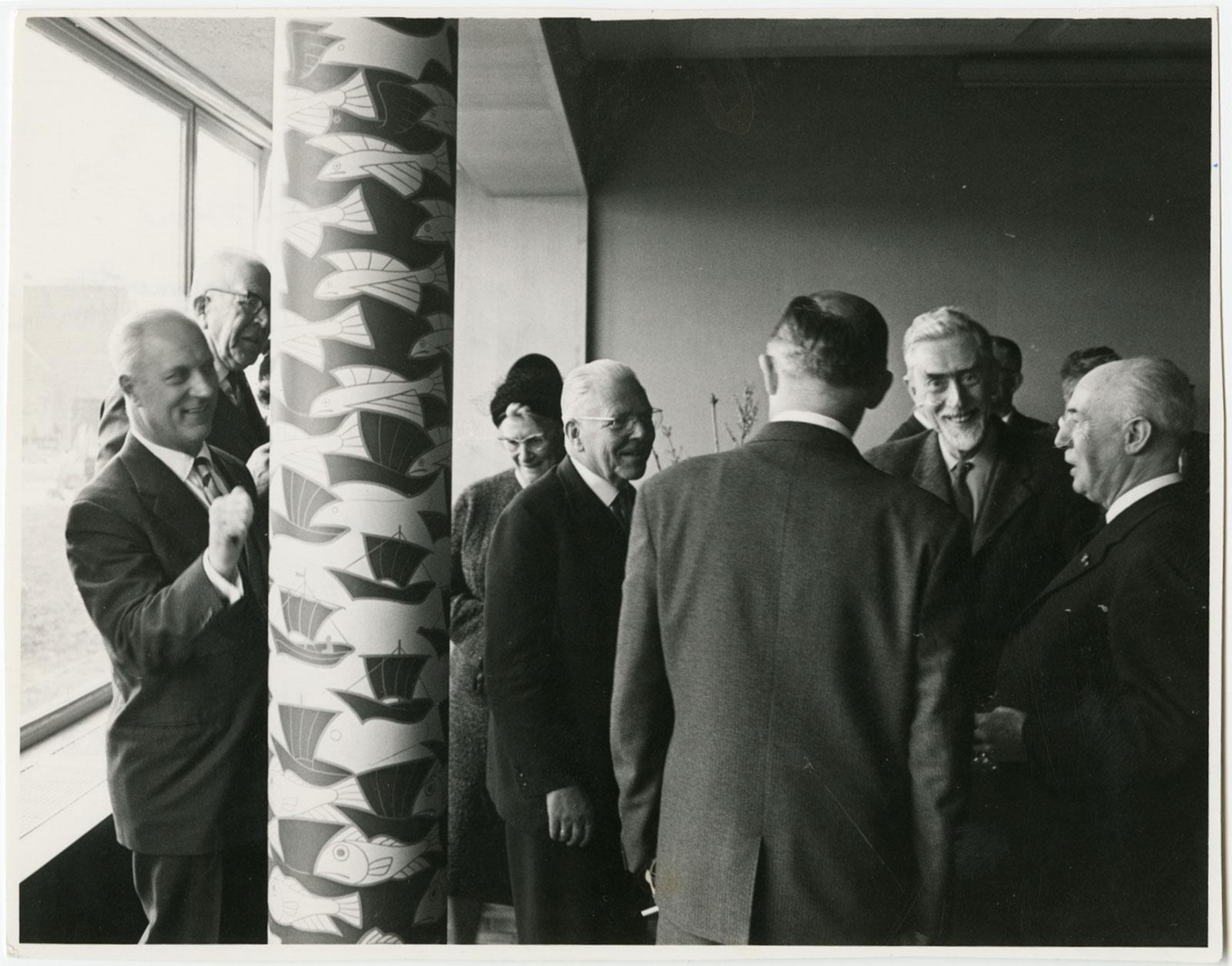
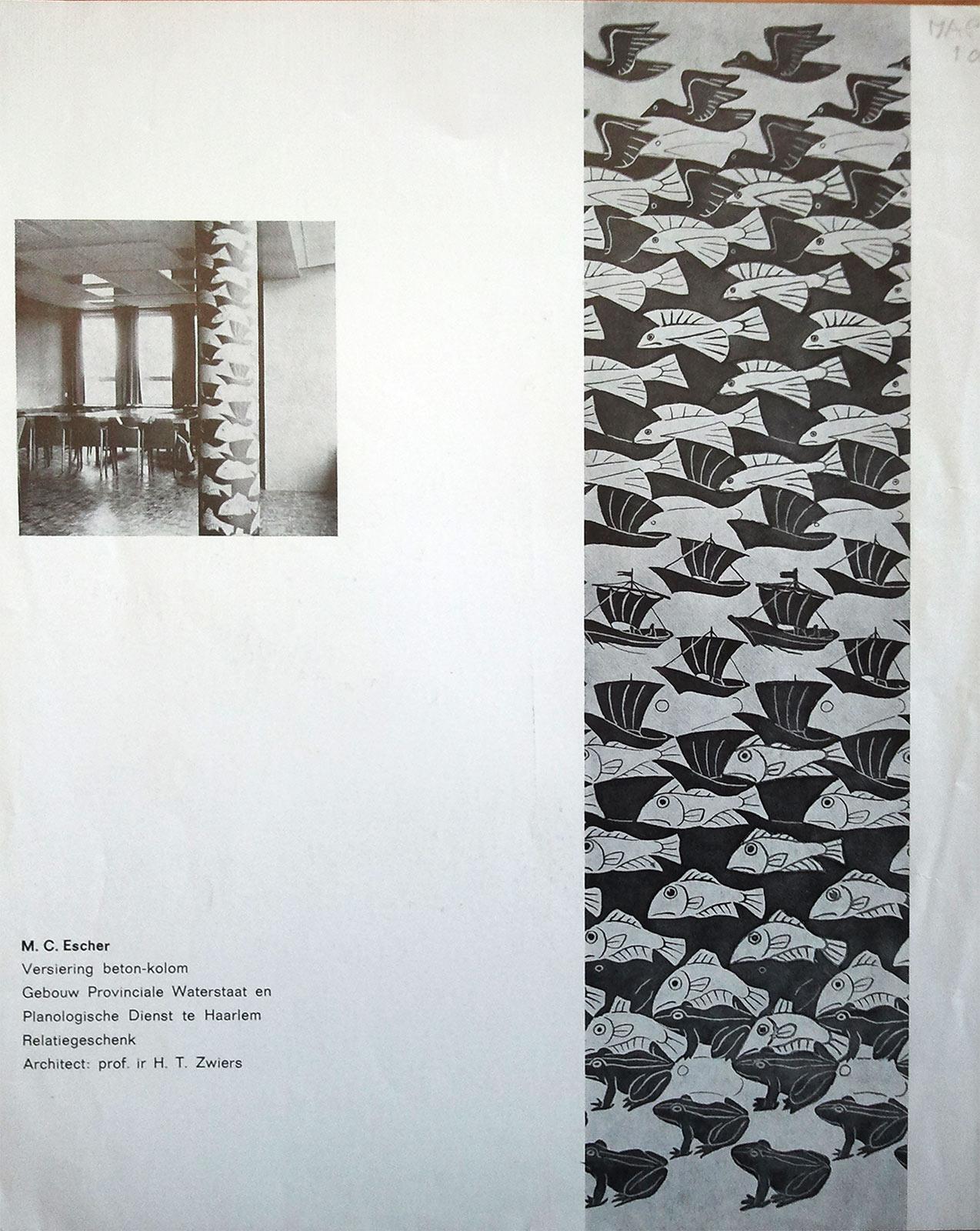
The drawings he produce feature several metamorphoses involving animals that depend on water: amphibians, fish, humans and birds. There are birds and flying fish in drawing number 111. Drawing number 112 contains boats and, again, flying fish. The fish in 112 differ slightly from the ones in 111, giving Escher the opportunity to change a bird into a boat. In 113 we again see boats, albeit now interspersed with fish, and in 114 he creates a tessellation with fish and frogs. In the final design for the column, he combines the four drawings into a vertical metamorphosis. Looking from the top down, the dark-coloured flying birds from drawing 111 are shown. They change into light-coloured flying fish and — in three steps —turn into the dark-coloured boats of 113. Gaining detail in the vertical movement. Finally, a skipper can be seen in the boat and the single sail is shown in more detail. The boat changes back into a light-coloured fish. The last animal is the dark-coloured frog from 114, which is in the last layer at the base of the column.
The column was located in the large conference room on the ground floor of the building and has been painted in three colours: cream, sienna and deep brown/black. It has a wooden base above the text on which is featured in copper letters: '23 March 1962 Vereniging Noord-Hollandse Waterschappen'. The column stood on a parquet floor with square inlay.
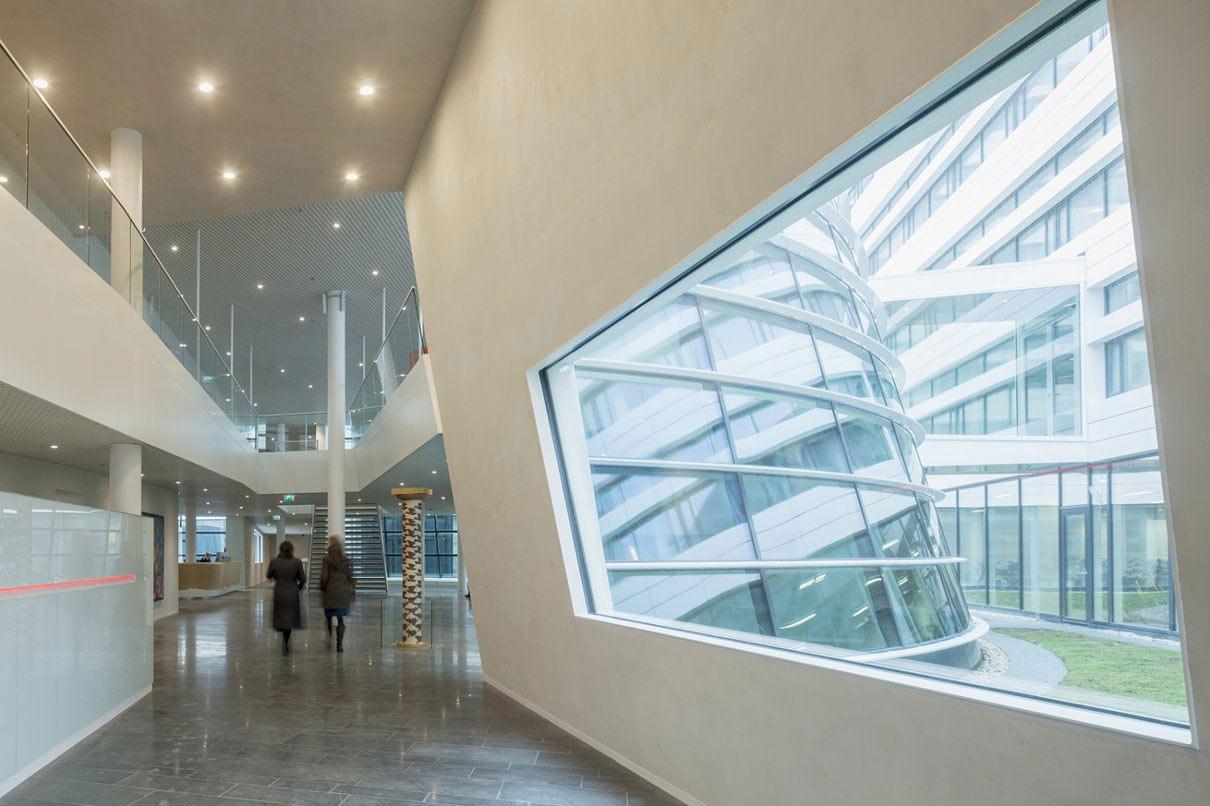
When in June 1967 the P.T.T. asked Escher to use his Metamorphosis II as the basis for a mural destined for the Post Office in The Hague, he reverted to a number of drawings and woodcuts he had made in previous years. He created a long section that feature such things as the flying fish and boats of drawing 112 and the boats and fish of drawing 113 again.
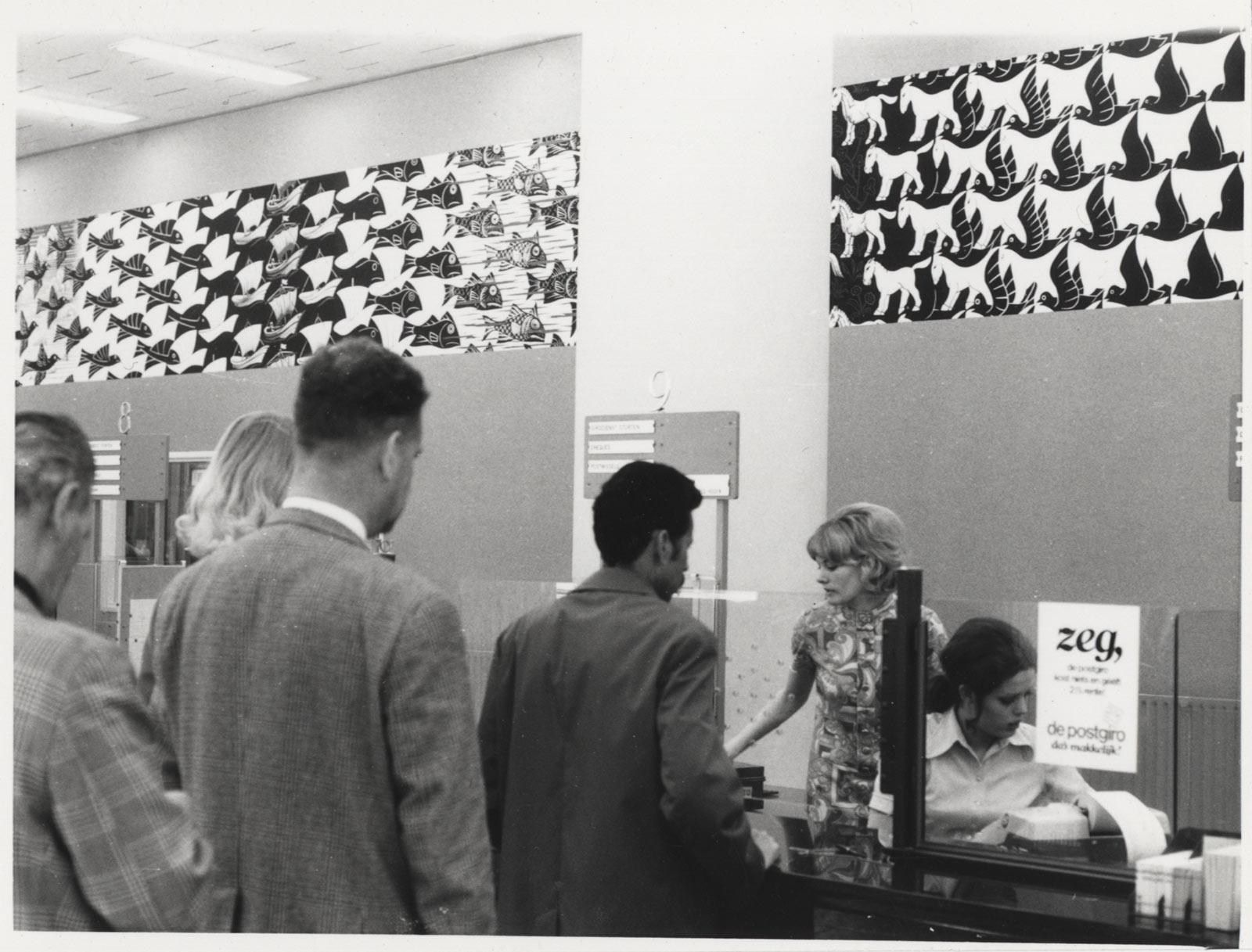
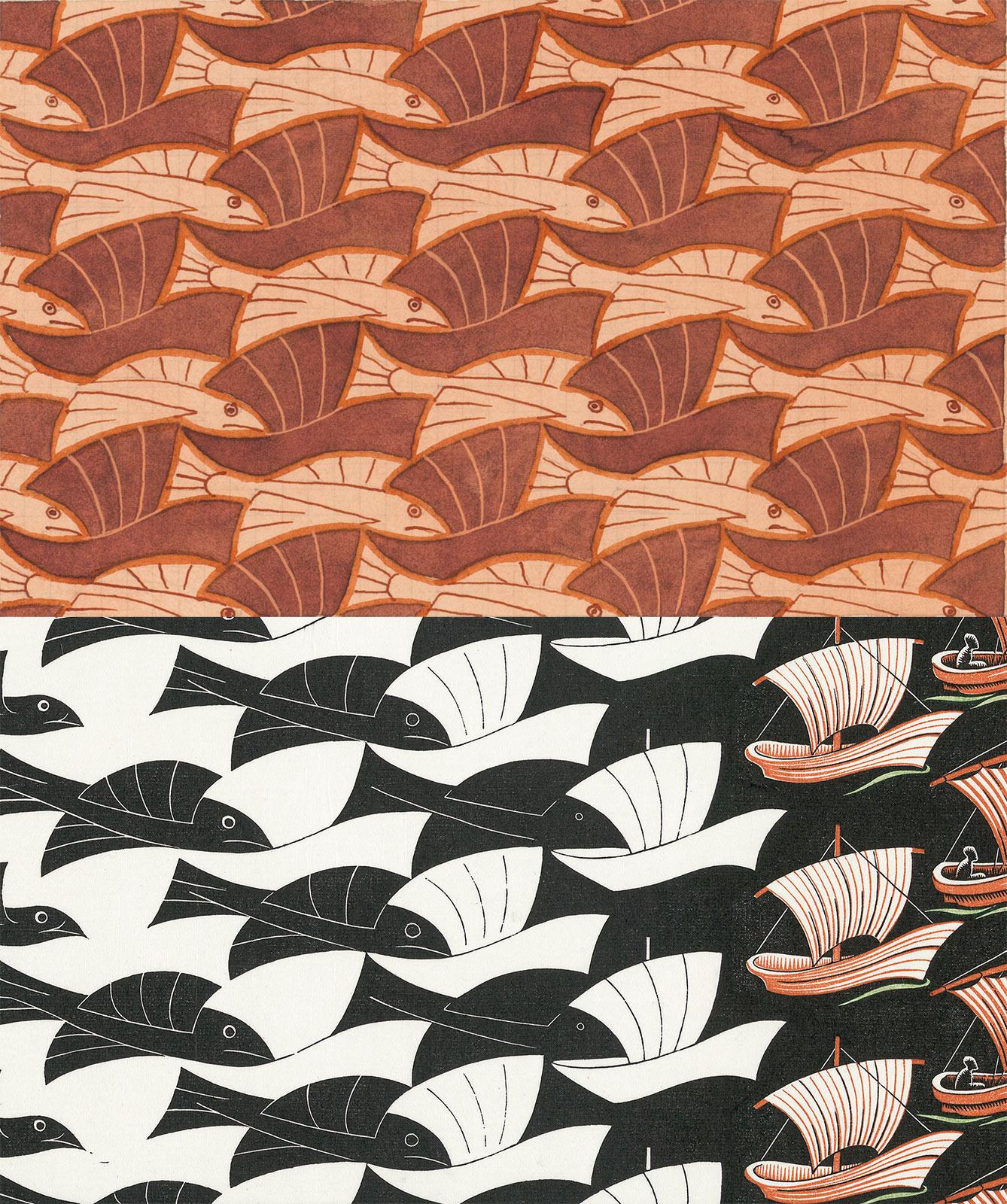
Since the spring of 2013, the column has been in the office complex of North Holland’s provincial authority at Houtplein in Haarlem. It no longer has a supporting function there, instead standing free in the entrance hall. Commissioned by Gerrit Bosch (former curator of the provincial authority’s art collection), a film report was made of the process of sawing out, transporting, restoring, transporting and siting the column.
Allow cookies
You need to change your cookie preferences to view the following content.
Film by Marcella Kuiper
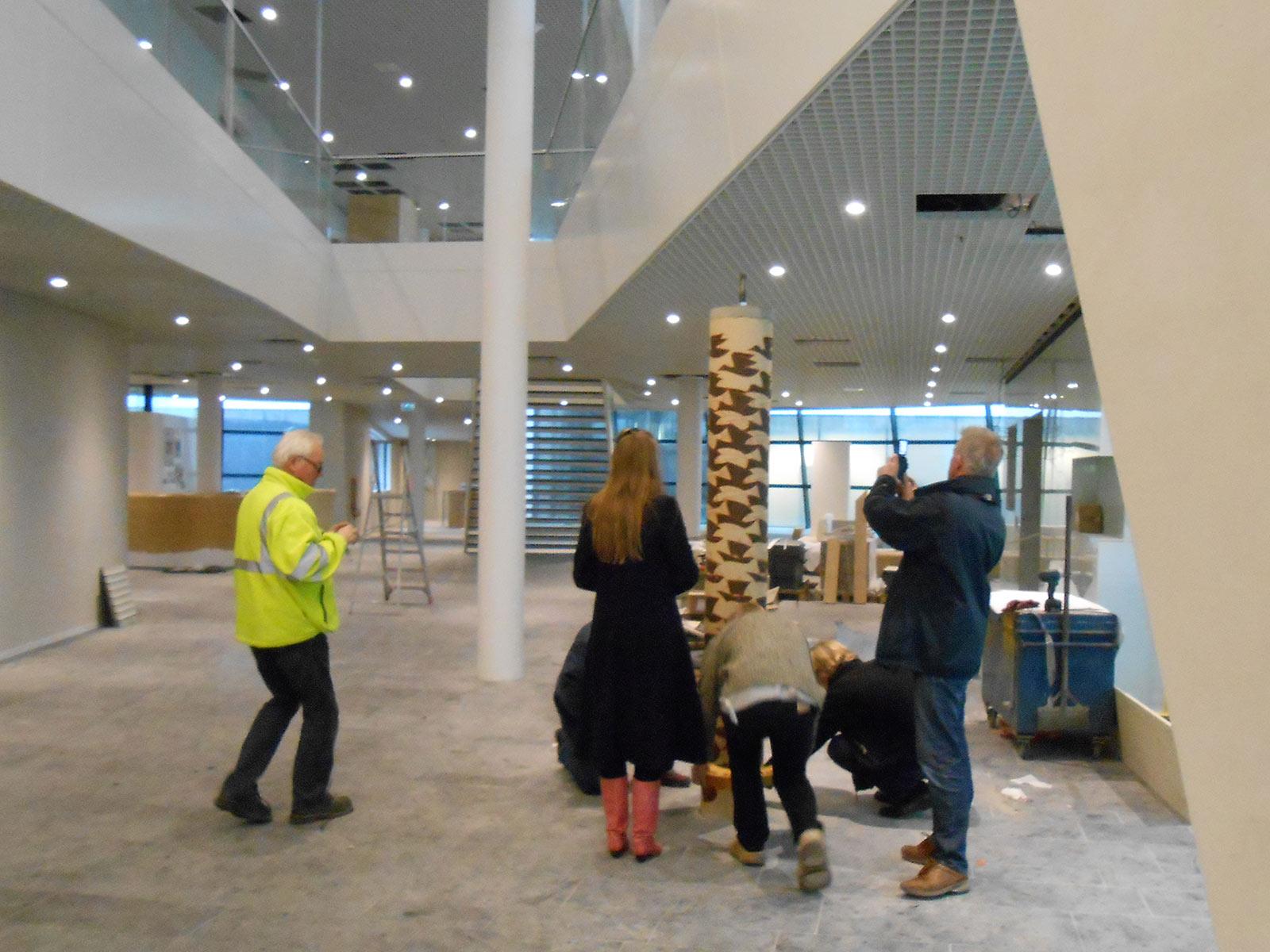
Siting the column in the office complex of North Holland’s provincial authority, January 2013
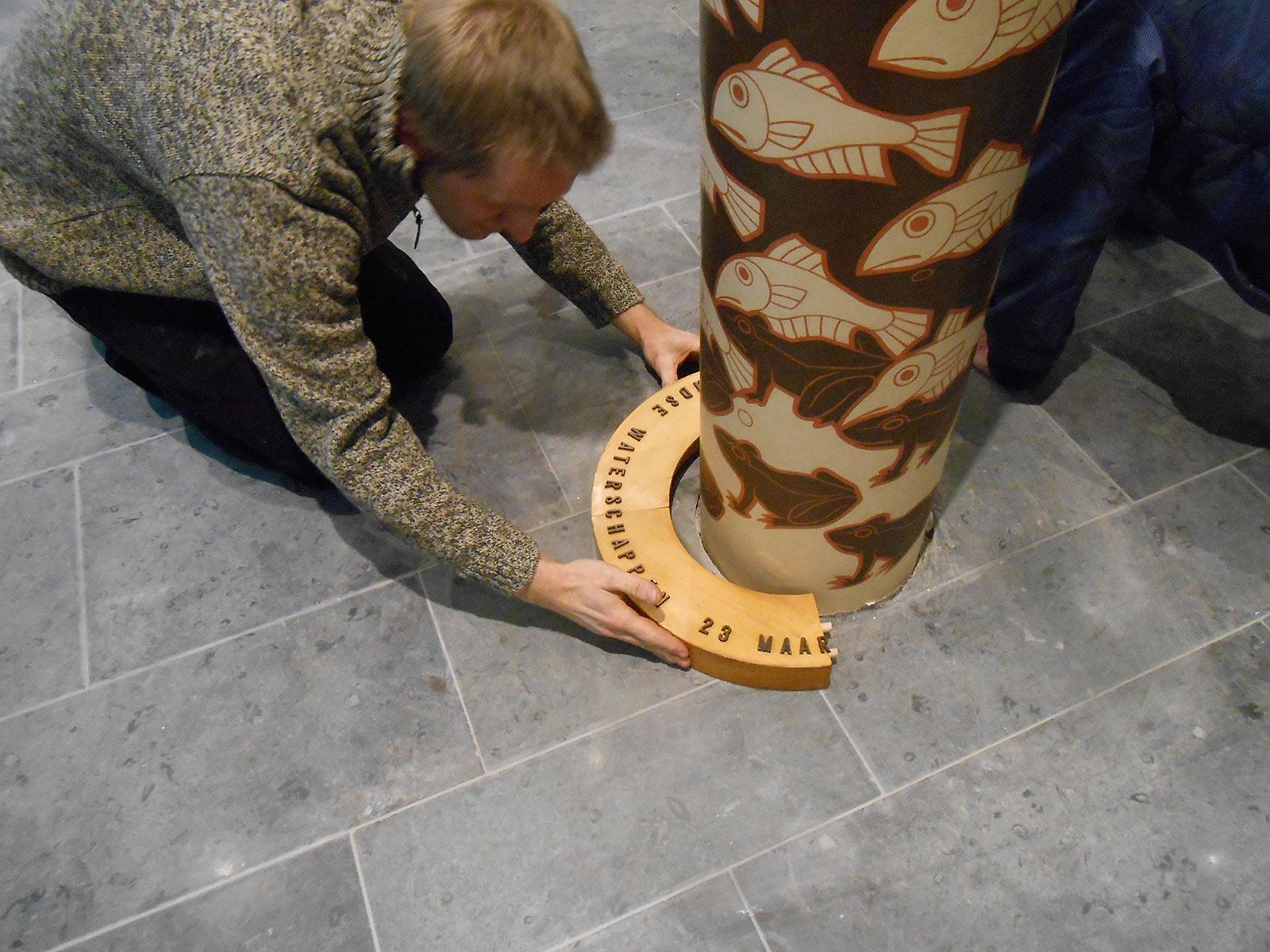
Map is loading...
More Escher today

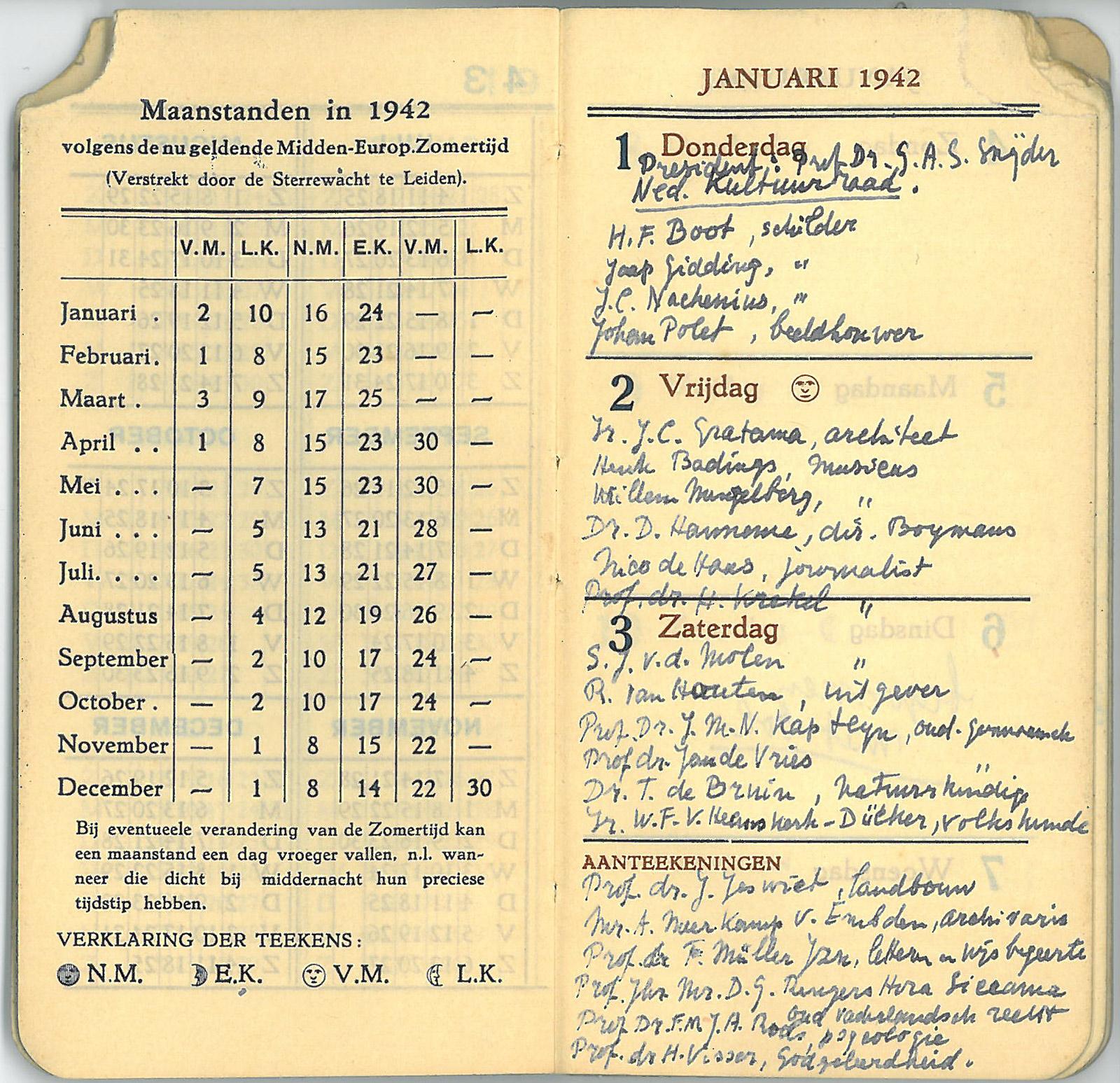
De Kultuurkamer
